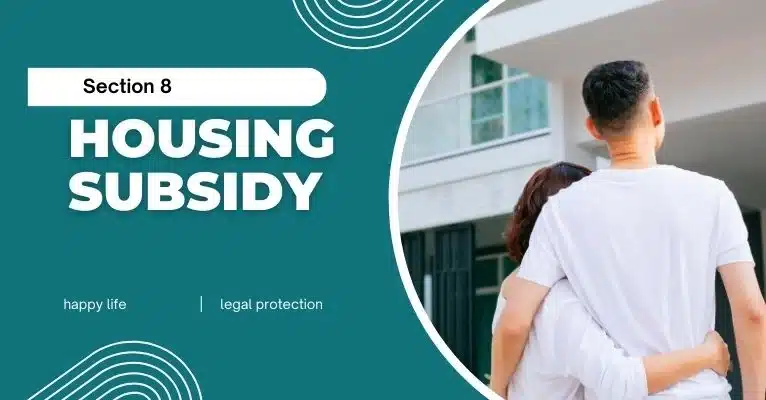Invest in Section 8 Housing 2024 – Pros & Cons
Affordable housing is a highly contested topic because it is more challenging than it may sound to define affordability for millions with varying sets of income in the United States of America. It may be a debated topic for the government, but it is certainly a lucrative opportunity for property managers who find subsidized housing a thrilling investment opportunity. In addition, low-income housing has a lot of perks for property managers in terms of tax benefits, so it is a win-win for both low-income families and property owners.
However, there is no wonder why so many people find the housing voucher program, aka the housing choice voucher program, confusing, so we have curated a complete guide for you on how to invest in Section 8 housing.
What Is Affordable Housing?

Public housing is a program funded by HUD. It caters to low-income families (households with median income or below it) by serving as an affordable choice for families residing in the U.S.A.
Multiple housing programs assist middle and low-income families via affordable rentals and rental services. The government usually funds these housing programs. They are a product of government negotiations with property managers and owners via setting the rent prices at a fair market price.
Investing in Section 8 Housing: Advantages and Disadvantages

Like anything else, the housing program comes with its own set of ins and outs, which depend on the investment you are ready to make and the house details you will go for. Let’s explore the ups and downs of spending in the housing so you can decide whether it is for you.
Advantages

Guaranteed and stable rent payments:
The housing program offers a guaranteed monthly payment from the government, covering 70% of the tenant’s rent, with the remaining rent paid by the tenant. This makes it a reliable source of income for property owners and managers.
A larger pool of potential tenants:
The minute you open your property to Section 8 renters, the very next, you will have tons of options to pick and choose as your renter, saving you the effort of searching for a renter. Furthermore, having more options means you will quickly get the right rental.
Lower vacancy rates:
One of the best perks of being a program property owner or manager is the chances of your property being vacant reduced to almost nonexistent as the section 8 tenants tend to reside for more extended periods, which helps to generate earnings to cover expenses like HOA fees, taxes, insurance, monthly running costs, etc., crucial for all rental property investors.
Favorable rental rates:
Like any other market, the housing market has a rental price range for comparable properties. Being a Section 8 landlord allows you to charge a monthly rent more towards a higher end of the market rates. Not just that, you can increase the rent by an annual reassessment of up to 8 %.
Additional exposure:
You can list your rental on PHA’s website as soon as it is approved so the potential voucher holders can see it, which is a free advertising opportunity.
Incentives to maintain property:
If you aim to rent your property under Section 8 housing, then keeping your property safe can be an excellent way to start.
Disadvantages

Delay of payments:
You might have to wait 30-60 days to receive your first rent payment from the government, which could be stressful.
Government bureaucracy:
One of the downsides of investing in Section 8 housing is how you have to keep up with regulations as well as the red tape of the government, which could prove to be an exhausting battle. Even qualifying as a Section 8 home renter is a headache owing to the government bureaucracy, i.e., the delays due to understaffed offices of HUD, unreliable services, etc.
Strict and costly inspections:
It would be best to go through strict inspections to qualify for the program, i.e., rehabbing your property. All these strict regulations could cost a lot of money because minor mistakes will make your application rejected as a landlord.
Delinquent tenants:
Even though the government pays up to 70 % of the rent, the remaining 30% is still produced by the tenant itself, which could be a real pain in the ass if the tenant defaults. And you will have to resort to filing for the section 8 eviction process, which is a tedious journey due to the bureaucratic process.
Increased wear and tear:
There are some cases where the tenants prove more destructive than privately paid tenants despite the reliability in the form of rent payment. The careless attitude of tenants towards the property might cost a million bucks, so you must keep in mind that you are not entitled to claim any damages as the government is not obligated to compensate you.
How to spend in Section 8 Housing
Follow the enlisted steps:
Find Section 8 Properties
Section 8 houses are available on Zillow, Redfin, Realtor.com, and MLS. Search for listings using filters, visit GoSection.com, or contact a professional realtor.
Contact the Local PHA to Apply
You must work with your local PHA to register as a Section 8 landlord. Visit the official site to see the listed public housing authorities. In addition, you will be required to submit a few personal details about you and your home.
Prepare the Home for Inspection
Carefully prepare your home for the inspection checks for hazards, i.e., subpar infrastructure, structural flaws, security issues, lead-based paint, etc. Moreover, the home’s roof, gutter, chimneys, porches, and foundation must be all in good shape. Remember to make the necessary changes to meet all the qualification requirements.
Create a Tenant Selection Plan
Once done with the inspection, you can create a selection plan and make it public. Do visit the webpage to see the complete list of rules featuring the selection plans of tenants.
Find and Manage Tenants
It is usually easy to find qualified tenants for a property; PHA tends to have a list of potential tenants, and you can make the most out of it by skimming through it. Investing comes with property management responsibilities, so be ready to embrace those responsibilities.
Bottom Line
Putting money into the program is a lucrative and stable investment if done rightfully, keeping in mind all the things that weigh or don’t. You will benefit from tax credits, but that is not just it. You will help the struggling families and help them get back on their feet.







